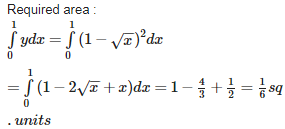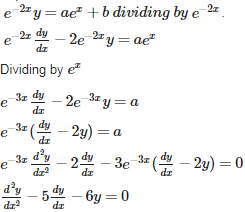CBSE 12TH MATHEMATICS - Online Test
Q1. The area of bounded by the curve and the coordinate axes is
Answer : Option B
Explaination / Solution:


Q2. Let R be the relation in the set {1, 2, 3, 4} given by R = {(1, 2), (2, 2), (1, 1), (4, 4), (1, 3), (3, 3), (3, 2)}. Then R is
Answer : Option D
Explaination / Solution:
The relation R is not symmetric , (1,2) ∈R , but (2,1) ∉ R , (1,3) ∈R ,but (3,1) ∉ R , (3,2) ∈R, but (2,3) ∉R.
Q3. A determinant is unaltered , if
Answer : Option C
Explaination / Solution:
This is because of the elementary transformations of determinants . The value of determinant remains unaffected by applying elementary transformations.
Q5. The scalar product of the vector with a unit vector along the sum of vectors is equal to one. Find the value of.
Answer : Option A
Explaination / Solution:
Let and

Therefore, a unit vector along
is given by:

Also, scalar product of with above unit vector is 1.


Therefore, a unit vector along
is given by:

Also, scalar product of with above unit vector is 1.

Q6. Which of the following is different from ?
Answer : Option B
Explaination / Solution:


therefore , none of these is the right option.
Q7. is equal to
Answer : Option D
Explaination / Solution:


Q8. If , then ,which of the following is true :
Answer : Option A
Explaination / Solution:
The given matrix is a skew – symmetric matrix.,therefore , A = - A’.
Q9. Find the equation of the plane through the line of intersection of the planes x + y + z = 1 and 2x + 3y + 4z = 5 which is perpendicular to the plane x – y + z = 0.
Answer : Option D
Explaination / Solution:
The equation of the plane through the line of intersection of the planes


Q10. Forming a differential equation representing the given family of curves by eliminating arbitrary constants a and b from yields the differential equation
Answer : Option A
Explaination / Solution:



